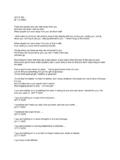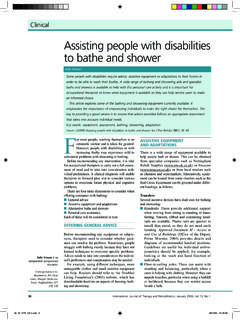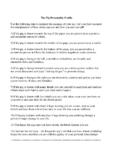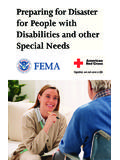Transcription of Young people and work experience: A brief guide …
1 Health and Safety Executive Young people and work experience A brief guide to health and safety for employers Introducing Young people to the world of work can help them understand the work environment, choose future careers or prepare for employment. An appreciation of workplace risk and how to deal with it can be one of the biggest benefits offered by a work placement. Introduction This leaflet is aimed at employers who provide work experience opportunities to Young people . It will help you, and those responsible for work experience in your business, ensure Young people have their health and safety protected while they This is a web-friendly are with you.
2 Version of leaflet INDG364(rev1), Under health and safety law, work experience students are your employees. You published 06/13 treat them no differently to other Young people you employ. You may have considerable experience of successfully employing Young people or taking on work experience students. If not, there are just a few steps that you need to take. Schools and colleges, or others organising placements, need to check that you have risk management arrangements in place. Conversations you have with the placement organiser could simply be noted for reference. Taking on work experience students should be straightforward. It should not be about generating unnecessary paperwork.
3 This guidance describes how to keep it simple. Definitions of Young people and children by age A Young person is anyone under 18. A child is anyone who has not yet reached the official minimum school leaving age (MSLA). Pupils will reach the MSLA in the school year in which they turn 16. Page 1 of 6. Health and Safety Executive What you need to do Simply use your existing arrangements for assessing and managing risks to Young people . Avoid repeating your assessment of the risks if a new student is of a broadly similar level of maturity and understanding, and has no particular or additional needs (the organiser or parent should tell you if they have).
4 If you don't currently employ a Young person, have not done so in the last few years and are taking on a work experience student for the first time, or one with particular needs, review your risk assessment before they start. Discuss the placement in advance with organisers. Take account of what they and the parents or carers tell you of the student's physical and psychological capacity and of any particular needs, for example due to any health conditions or learning difficulties. Keep any additional work in proportion to the environment: For placements in low-risk environments, such as offices or shops, with everyday risks that will mostly be familiar to the student, your existing arrangements for other employees should be enough.
5 For environments with risks less familiar to the student (eg in light assembly or packing facilities), you will need to make arrangements to manage the risks this will include induction, supervision, site familiarisation, and any protective equipment needed. For a placement in a higher-risk environment, such as construction, agriculture and manufacturing, you will need to: consider what work the student will be doing or observing, the risks involved in that work and how these are managed;. satisfy yourself that the instruction, training and supervisory arrangements have been properly thought through and that they work in practice.
6 You may, particularly for higher-risk environments, need to consider specific factors that must be managed for Young people , including exposure to radiation, noise and vibration, toxic substances, or extreme temperatures. Where these specific factors exist in your workplace you should already have control measures in place. This will also apply to legally required age limits on the use of some equipment and machinery (eg forklift trucks and some woodworking machinery). Consider whether you need to do anything further to control the risks to Young people . Explain to parents/carers of children what the significant risks are and what has been done to control them.
7 This can be done in whatever way is simplest and suitable, including verbally, and is very often done through the school or college. When you induct students, explain the risks and how they are controlled, checking that they understand what they have been told. Check that students know how to raise any health and safety concerns. Young people and work experience Page 2 of 6. Health and Safety Executive Training and supervision Many Young people are likely to be new to the workplace and in some cases will be facing unfamiliar risks, from the job they will be doing and from their surroundings. You will need to provide them with clear and sufficient instruction, training and supervision to enable them to work without putting themselves and other people at risk.
8 Young people are likely to need more supervision than adults. Good supervision will help you get a clear idea of the Young person's capabilities and progress in the job and monitor the effectiveness of their training. You will need to consider how much training is necessary. A proportionate approach is needed, for example a low-risk business would not be expected to have a need for lengthy technical training. Similarly, where a student is on a short- term work experience placement, induction and training needs should be tailored to the tasks they are going to be doing. It is important that you check Young people have understood the instruction and training which will include, for example: the hazards and risks in the workplace.
9 The health and safety precautions that are in place. In workplaces where there are health and safety representatives, they can play a valuable role early on by: introducing the Young person to the workplace;. helping with their ongoing training;. giving you feedback about particular concerns. As employees, Young people have a duty to take care of their own health and safety and that of others who may be affected by their actions. This includes co-operating with you by listening carefully, following instructions, using any safety equipment that you have provided and taking part in relevant training. What the law says Under health and safety law, every employer must ensure, so far as reasonably practicable, the health and safety of all their employees, irrespective of age.
10 As part of this, there are certain considerations that need to be made for Young people . This section outlines the requirements in the law. Putting the requirements into practice should be straightforward and in most cases you should already have the necessary risk management arrangements in place. What does so far as reasonably practicable' mean? This means balancing the level of risk against the measures needed to control the real risk in terms of money, time or trouble. However, you do not need to take action if it would be grossly disproportionate to the level of risk. Young people and work experience Page 3 of 6. Health and Safety Executive Under the Management of Health and Safety at work Regulations 1999, you have a responsibility to ensure that Young people employed by you are not exposed to risk due to: lack of experience .
















